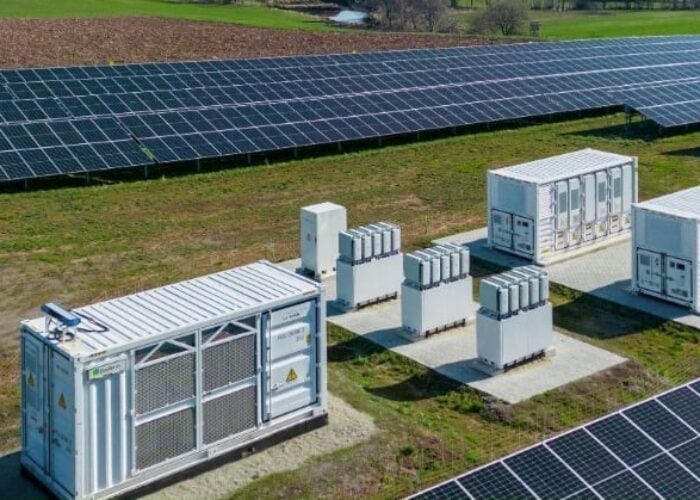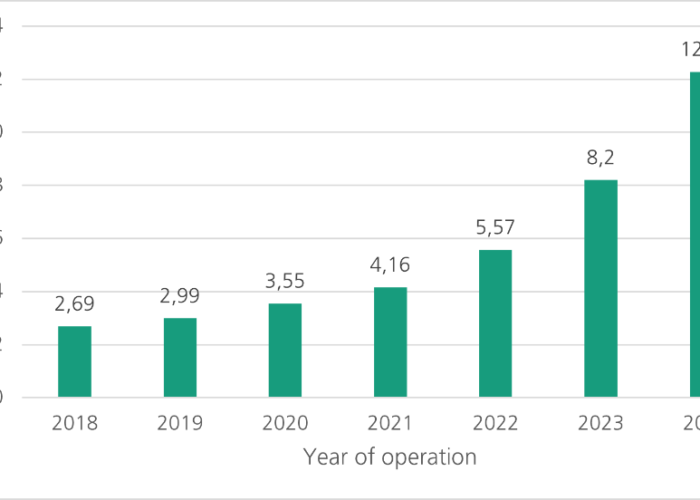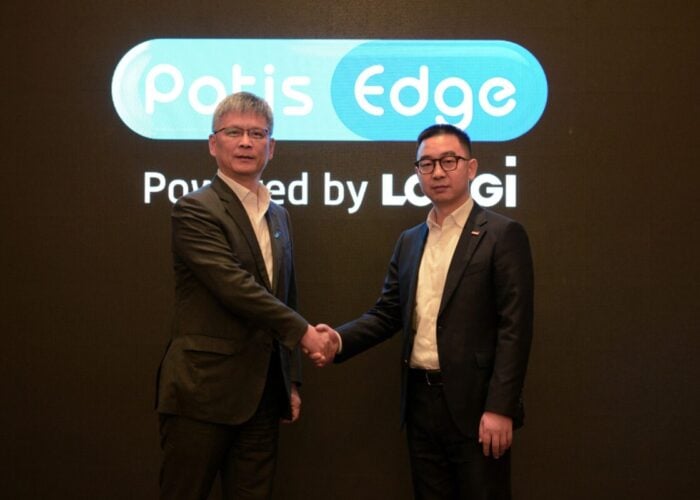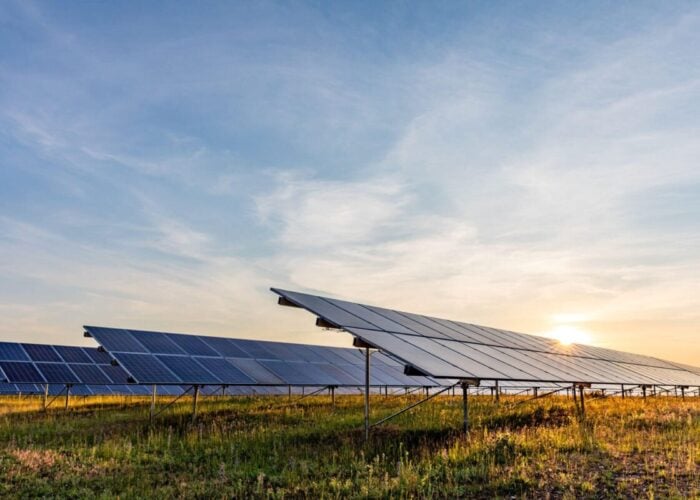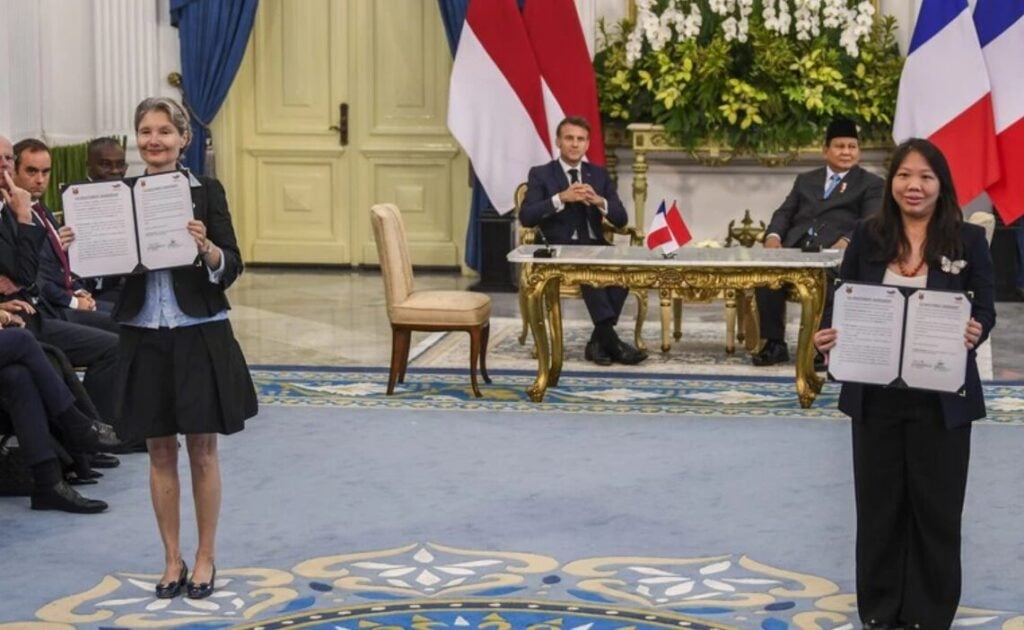
The Indonesian government has ratified the PLN Electricity Supply Business Plan (RUPTL) 2025–2034, targeting 42.6GW of new renewable energy generation capacity and 10.3GW of energy storage.
Announced last week (26 May), Bahlil Lahadalia, Indonesia’s minister of investment and head of investment coordinating board, said the targets align with the Paris Agreement, emphasising the need for countries to remain consistent in maintaining this global target, which aims to limit the temperature increase to 1.5 degrees Celsius.
Try Premium for just $1
- Full premium access for the first month at only $1
- Converts to an annual rate after 30 days unless cancelled
- Cancel anytime during the trial period
Premium Benefits
- Expert industry analysis and interviews
- Digital access to PV Tech Power journal
- Exclusive event discounts
Or get the full Premium subscription right away
Or continue reading this article for free
“The Paris Agreement commitment regarding energy transition is no longer a shared commitment, and several countries have withdrawn from their initial commitments. However, we must remain consistent in implementing this by considering our capabilities, energy availability levels, and economic factors,” Lahadalia said.
The RUPTL aims to support the country’s state-owned electricity company, PLT, in delivering 69.5GW of new energy generation by 2034.
Of the 69.5GW figure, 42.6GW will come from renewables. Specifically, solar PV will make up the bulk of this with 17.1GW targeted, hydropower comes second with 11.7GW, and wind generation comes third with 7.2GW. 5.2GW of geothermal and 0.9GW of bioenergy generation is also targeted as part of the wider figure.
The remaining 69.5GW capacity will be filled by gas and coal plants, totalling 10.3GW and 6.2GW, respectively, and two small modular nuclear reactors, totalling 0.5GW, planned for Sumatra and Kalimantan.
In addition, 10.3GW of energy storage is also targeted to support grid stability.
This means that 76% of the country’s new energy generation capacity will be comprised of renewable energy sources, contributing to an uptake in the overall electricity mix to 35% by 2034. For reference, this currently stands at 12%.
Inclusion of coal and gas-fired plants attracts criticism
The inclusion of coal and gas-fired generation has drawn criticism from the Institute for Essential Services Reform, an Indonesian energy sector think tank.
Indeed, its executive director, Fabby Tumiwa, said the inclusion of 2.8GW of coal-fired power plants that will still be operational after 2030 is inconsistent with the country’s net zero emissions target of achieving this by 2060 or sooner.
Tumiwa added that the 42.6GW figure is lower than the Just Energy Transition Partnership (JETP) commitment of 56GW by 2030 and is not in line with the need to limit global temperature increases to 1.5 degrees Celsius according to the Paris Agreement.
“PLN is currently facing difficulties in meeting the availability of gas for its generators. If demand increases two to three times in the future, the threat and risk to meeting PLN’s gas needs will be even greater. In this situation, the development of larger renewable energy is a lower risk option because it not only strengthens the reliability of the energy system, but also contributes to the creation of more affordable energy costs for the community,” Tumiwa said.
‘Massive grid upgrade’ is the backbone of Indonesia’s transition
Alongside the massive uptick in potential renewable energy generation, perhaps one of the most significant announcements made by the government is plans for a “massive grid upgrade” forming the backbone of the country’s energy transition.
Indonesia is one of the largest archipelagos in the world and has roughly 17,508 officially listed islands within the territory of the Republic of Indonesia. This creates geographic complications when trying to develop a nationwide grid infrastructure.
As part of the RUPTL, PLN will develop nearly 48,000km of new transmission lines, larger than the circumference of the Earth (roughly 40,000km), and with 108,000MVA in substation capacity.
This will help Indonesia develop a sufficient grid to connect communities and provide a just transition for its citizens.
Lahadalia emphasised that providing energy access to villages currently cut off from the grid is a priority for the Indonesian government.
“For me, energy is not just about needs, but also a form of equity and justice that we must implement from Aceh to Papua. President Prabowo Subianto’s directive is to immediately install electricity in villages that don’t have it yet. So we will complete this by 2029, and we will do this gradually starting from now,” Lahadalia said.
Via the RUPTL, PT PLN aims to power over 5,700 remote villages and connect nearly 780,000 households via the Village Electricity Program.
Nuki Agya Utama, executive director of the Association of Southeast Asian Nations (ASEAN) Centre for Energy, explained on LinkedIn that Indonesia’s grid has been “historically segmented by necessity: each main island or region operates its electrical system, isolated by seas” in comparison to the more traditional continental grids in the US, China, and Europe.
As such, Indonesia’s dispersed island structure makes nationwide grids costly and complex. To achieve this, Utama said the country must utilise long-distance inter-island connections via submarine cables, which are resource-intensive and often face environmental and logistical constraints.
Macron in attendance for TotalEnergies, RGE solar-plus-storage deal
Last week, the French president, Emmanuel Macron, was in attendance as TotalEnergies and Singapore-headquartered Royal Golden Eagle (RGE), via its equally owned joint venture Singa Renewables, agreed to co-invest in a solar-plus-storage project in Indonesia.
The size of the project has not been disclosed. PV Tech has reached out to TotalEnergies for confirmation of the project size but has not received a response at the time of reporting.
The agreement was signed at the Indonesian Presidential Palace in Jakarta, with Indonesian president Prabowo Subianto and Emmanuel Macron in attendance.
Little has been disclosed about the project as yet, except that it will be constructed in phases and located in the Riau Province of Indonesia, on the central eastern coast of Sumatra.
The companies have also secured a conditional licence from Singapore’s Energy Market Authority (EMA) to import 1GW of the project’s energy to the city-state.
“Our utility-scale project underscores TotalEnergies’ commitment to supporting the region’s energy transition efforts, while ensuring energy security. This project aims to drive the development of regional renewable energy infrastructure and advance the ASEAN Power Grid vision,” said Helle Kristoffersen, president of Asia and member of the executive committee at TotalEnergies.
The two companies also signed a memorandum of understanding with Singapore Energy Interconnections (SGEI) to develop a subsea interconnector between the countries jointly.
Kristoffersen added: “The project will contribute to Singapore’s goal of reaching net zero emissions by 2050, while supporting Riau Province’s economic development in Indonesia.”

